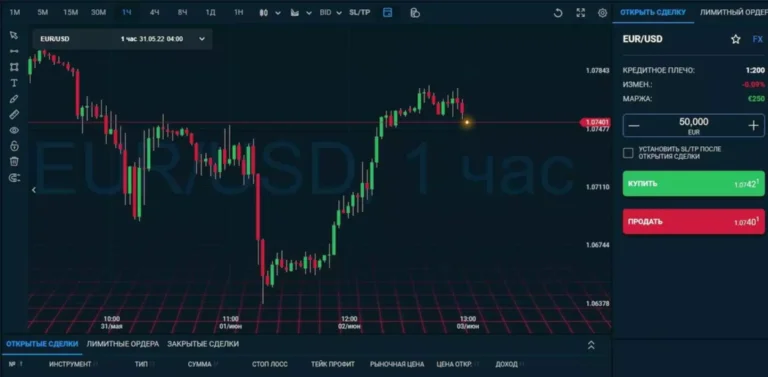Content
Speculators buy and sell currencies to profit on the exchange in the future. Large ones are usually smaller hedge funds or proprietary trading companies. From over $6.6 trillion, which is the daily volume in the forex market, retail traders make only a-book brokers around 2-3%. A carry trade is a popular vehicle for making money for larger speculators. Carry trade is using a currency with a lower interest rate to buy a currency with a higher interest rate. Traders who feel their losses are manipulated are unlikely to stay with a broker long-term.
Spread Types Available at Exness
A-book brokers earn independently of market movements, profiting from commissions and https://www.xcritical.com/ spreads, also shared between the liquidity provider and the trading platform. One significant advantage is that brokers have more control over the pricing and execution of trades, allowing them to offer fixed spreads and maintain a consistent profit margin. This model also enables brokers to provide additional services, such as offering leverage beyond what external liquidity providers may offer, providing more flexibility to clients. The broker cannot profit from traders’ losses without conflict of interest. This model also offers increased transparency because trader orders are handled in the real market, which reflects actual market conditions.
Sponsored Access: Transforming Market Participation in Capital Markets
Conversely, B-Book brokers can make substantial profits from the losses of traders, using tactics like adjusting quotes or monitoring client stops closely. This approach might offer higher returns but raises serious ethical questions. By handling trades within their own system, B-Book brokers can offer competitive Proof of space spreads and fast order execution. This is particularly beneficial during periods of high market volatility when quick trade execution is critical.
Which Model Should Your Brokerage Choose?

Know more about the long-run optimization with hybrid execution in Brokeree Liquidity Bridge. LiteFinance Global LLC does not provide services to residents of the EEA countries, USA, Israel, Russia, and some other countries. The ECN system is another market participant, an intermediary providing the technological ability to process orders.
The broker is a counterparty with two entirely separate counterparties. The broker replicated its customer’s trade with an LP in the institutional FX market. The broker wishes to offload or hedge its market risk to another market participant in the institutional FX market. An intermediate comparative analysis for three major NDD models (I will not include DD and B-Book models without passing orders to the external market) is presented in the table below.

No business model, including the A-Book and B-Book models, can guarantee a successful firm or a lucrative transaction. These models are only tools for doing business, and the extent to which you gain personally from them is solely dependent on your ability to apply them in a professional manner. Seasoned copywriter with a focused expertise in crypto and fintech, adept at translating complex industry jargon into clear, engaging content.

Transparency is a cornerstone of trust in the brokerage-client relationship. Exness has garnered praise for its clear communication regarding fees, spreads, and trading conditions. The company’s commitment to regulatory compliance adds to its reputation for transparency, assuring clients that their funds are managed responsibly.
As you can see, it’s hard for A-Book brokers to make money unless they have A LOT of customers who trade FREQUENTLY (preferably at large sizes). The profit made from its trade with the LP exceeds the loss incurred from its trade with Elsa (due to price markup), so the broker made an overall net profit of 2 pips or $600 ($300 x 2 pips). Depending on the broker, discounted commissions may be offered based on your trading volume. It’s worth noting that for institutional traders, our parent company, GAIN Capital, offers ECN solutions through the GTX marketplace, where we do not take the other side of the trade. MT4 is particularly popular among forex traders for its advanced charting tools, automated trading capabilities, and extensive library of technical indicators. On the other hand, MT5 represents a more modern iteration, incorporating features such as deeper liquidity analysis and improved order types.
- Forex brokers employ various business models to manage risk, generate revenue, and cater to the diverse needs of their clients.
- To mitigate concerns over the conflict of interest, many B-Book brokers offer additional benefits, such as tighter spreads, fast trade execution, and enhanced customer support.
- While variable spread accounts could be either A-book or A+B hybrid.
- This setup ensures that traders receive the best possible prices and tighter spreads, particularly advantageous for large-volume accounts or institutional traders.
- The more trades a client makes, the more commission the broker earns—providing a shared interest in seeing successful trading activities, even if neither side is explicitly dependent on it.
A-Book forex brokers make their profits via a small mark up on the spread/commission that you directly pay when placing trading orders. Assume the spread from the liquidity provider is 3 pips, your A Book broker may list it on their platform as 4 pips, guaranteeing them a 1 pip profit. The profits of the trader are equivalent to the losses of the broker. However, such a strategy also opens the possibility for the broker to incur losses that they would have entirely avoided had they hedged the full trade amount. To summarise everything we’ve discussed, it is critical to comprehend broker models in the Forex trading world. A-Book brokers provide better conditions and transparency, while the B-Book model offers potentially higher profitability.
They are intermediaries who send their clients’ trade orders directly to liquidity providers or multilateral trading centers (MTFs). In this model, brokers make money by increasing the spread or collecting a commission on the transaction volume. Consequently, there is no conflict of interest because brokers make the same amount of money for both winning and losing traders. Unlike A-Book brokers, who depend on commissions or spreads, B-Book entities benefit from spreads and trader losses.
This agile approach allows them to respond promptly to changing market conditions, further boosting traders’ chances of securing favorable trade outcomes. Besides, competition among brokers is so strong that most of them merely ceased to “help traders lose their deposits” and allow them to trade normally. Some traders are uncomfortable with the idea of a broker benefiting from their losses, and it’s understandable.
In contrast, large transactions, individually or in a pool, can be transferred to the liquidity provider and then to the interbank market Forex. An example of such a model is a combination of cent (B-Book) and ECN (A-Book) accounts. There is no conflict of interest in this model since the broker does not act as a counterparty to transactions.
By integrating multiple liquidity providers, Exness can offer competitive pricing and minimize slippage during volatile market conditions. This diversification strategy reduces reliance on any single source of liquidity, enhancing stability and consistency in trade execution. On the opposite end of the spectrum, ECN and STP brokers typically offer direct market access, allowing traders to engage with genuine market prices.
Poor customer experiences, rumors of unethical practices, or complaints about price manipulation can quickly tarnish a broker’s reputation. Reputation is key in the highly competitive forex market, and brokers who fail to establish trust may struggle to maintain a strong client base. While B-Book brokers can offer quick execution and attractive spreads, the conflict of interest inherent in this model is significant. Because the broker serves as the counterparty to the trade, the profits of the trader equate to the losses of the broker, and vice versa. This creates a situation where brokers may financially benefit from a trader’s losses. The broker makes money because the prices it trades with its liquidity providers (LPs) are better than the prices it trades with its customers.
This approach allows B-Book brokers to effectively become market makers, controlling trade execution internally. The golden question is who is the counterparty; it is that algorithmic counterparty that sucks the retail trader’s money without the retail trader probably knowing it. Brokers accept their clients’ trades and automatically send them to the liquidity provider.